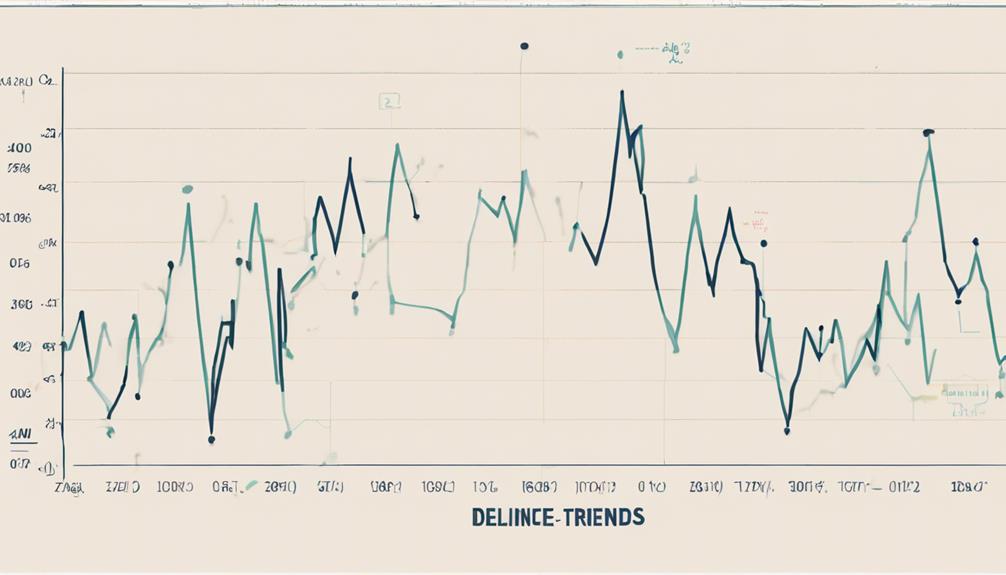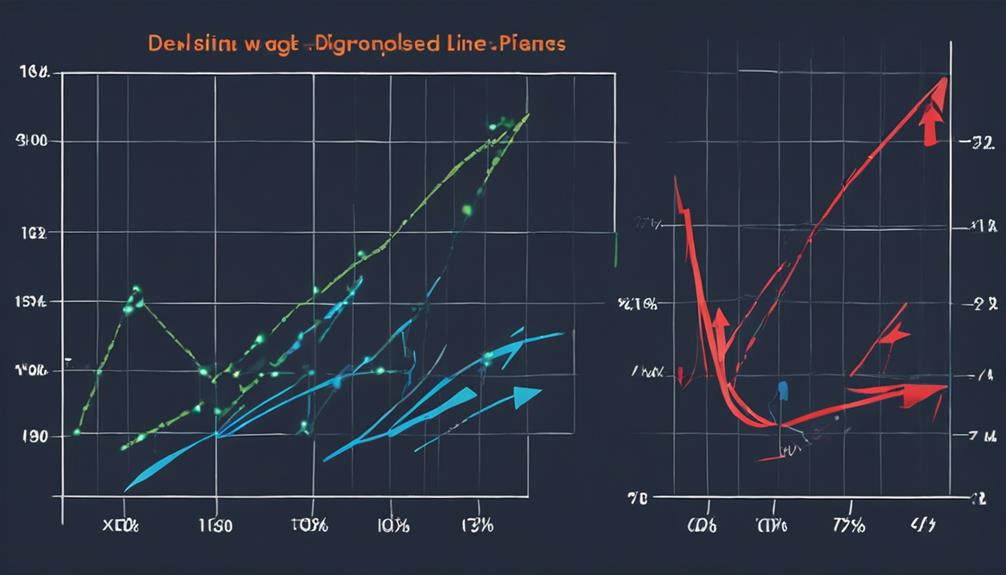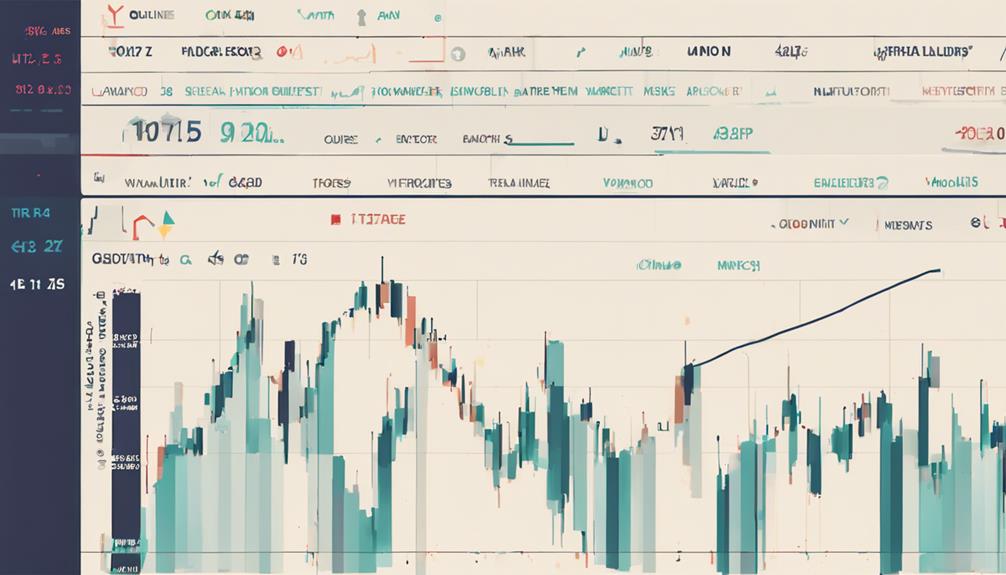So, you've heard about the Advance Decline Line (A/D) and are wondering what all the fuss is about?
Well, let's just say understanding this indicator might be more crucial than you think.
Ever wondered how market sentiment can be reflected in a single line?
Stay tuned to discover how deciphering the movements of the A/D Line can potentially unlock a deeper understanding of market dynamics and provide valuable insights for your trading decisions.
Understanding Advance Decline Line
Regularly monitoring the Advance Decline Line is crucial for traders seeking a comprehensive understanding of market breadth and potential price movements. The A/D Line acts as a barometer of market participation, reflecting the overall health of the market.
When the A/D Line is rising, it confirms bullish trends, indicating a broad-based advance. Conversely, a declining A/D Line suggests weakening market breadth and potential bearish signals. Divergence between the A/D Line and the index can be particularly insightful, signaling possible trend reversals or shifts in market sentiment.
Interpreting ADL Trends

To interpret ADL trends effectively, scrutinize the direction of the Advance Decline Line as it mirrors market breadth and potential price movements. Here are key points to consider:
- Rising A/D line signifies broad market strength and strong participation.
- Falling A/D line indicates weakening market breadth and a possible end to a rally.
- Divergence between A/D line and index may signal a trend reversal.
- New highs in the A/D line confirm a bullish trend, while new lows may suggest bearish sentiment.
Analyzing these trends can provide valuable insights into the market's direction and help traders anticipate potential price movements based on the ADL's behavior as a leading indicator.
Identifying ADL Divergence

When identifying ADL divergence, closely observe the relationship between the Advance Decline Line trend and the price trend of a specific index. Bullish divergence occurs when the ADL is rising while the price index is falling, indicating potential upward price movement.
On the other hand, bearish divergence is seen when the ADL is declining while the price index is rising, suggesting a possible downward price reversal. Monitoring ADL divergence helps anticipate market turning points and confirm the strength of price trends.
This analysis provides insights into market sentiment and can refine trading strategies. Understanding ADL divergence is crucial for traders as it can offer valuable cues about potential market movements and the overall health of price trends.
Significance of ADL Movements

Rising ADL movements serve as a key indicator of broad market strength and active participation in rallies. Here's why these movements are significant:
- Market Strength: Increasing ADL movements suggest a robust market with widespread participation in rallies.
- Trend Reversal: Divergence between ADL movements and market index can signal a potential reversal in the prevailing trend.
- Bullish Trend Confirmation: ADL movements hitting new highs can confirm a bullish trend, reflecting positive sentiment.
- Leading Indicator: ADL movements can lead price movements, providing traders with insights into potential market shifts.
Understanding the significance of ADL movements can help traders anticipate market movements and make informed decisions based on market breadth and participation levels.
Can you provide a detailed explanation of how to read the Advance Decline Line?
The advance decline line analysis tutorial guides investors on how to interpret market momentum by tracking the number of advancing and declining stocks. By plotting this data over time, traders can identify strength or weakness in the overall market. Understanding the advance decline line is essential for making informed investment decisions.
Can the Advance Decline Line be Used to Predict Market Trends?
The beginner’s guide to advance decline line shows how it can effectively predict market trends. By analyzing the number of advancing and declining stocks, it provides valuable insights into the overall health of the market. Traders use this tool to gauge the strength of a trend and make informed investment decisions.
Mitigating ADL Limitations

Consider employing supplementary breadth indicators alongside the Advance Decline Line (ADL) to address its inherent limitations and enhance market analysis. Evaluate the market breadth using other indicators such as the Arms Index (TRIN) to complement ADL line analysis.
Take into account the impact of NASDAQ stocks and delisted stocks on the accuracy of ADL line readings. Recognize that the ADL line treats all stocks equally, potentially overlooking the influence of larger companies on market indices.
Utilize the ADL line in conjunction with other indicators for a more comprehensive assessment of market conditions and trends. By incorporating additional breadth indicators, you can mitigate the limitations of the ADL line and gain a more nuanced understanding of market dynamics.
Frequently Asked Questions
How Do You Read an Advance-Decline Line?
To read an advance-decline line, observe its trend. Rising A/D Line signals market strength; falling A/D Line indicates market weakness. Divergence from the index may predict a trend change. Monitor for broader market insights.
What Is the Formula for the Advance-Decline Line?
To understand the Advance-Decline Line formula, you subtract declining from advancing stocks. It gauges market breadth and confirms trends. Daily changes in advancing and declining stocks are tracked to reveal insights into market direction.
What Is the Advance-Decline Strategy?
To understand the advance-decline strategy, analyze daily differences in advancing and declining stocks for market trend confirmation. Use the A/D line with market indices to gauge participation and market health, spotting divergences for potential signals.
What Is the Advance-Decline Line in Tradingview?
When analyzing the Advance-Decline Line in TradingView, you can assess market breadth and sentiment. This indicator confirms trends and potential reversals. Plot it on charts to compare with stock indices for insights into market participation and movements.
Conclusion
In conclusion, mastering the method to read the Advance Decline Line can provide traders with valuable insights into market movements. By analyzing ADL trends, identifying divergences, and understanding its significance, traders can make informed decisions.
Remember, the ADL is a powerful tool for gauging market sentiment and participation, offering a unique perspective on potential trend reversals. Stay vigilant, utilize the ADL effectively, and seize opportunities in the ever-changing market landscape.
